History of speed: how the world became faster
How to develop racing cars: From electric cars to jet racing cars
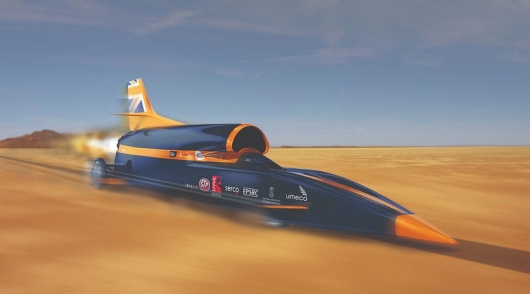
The battle for the speed record on the earth erupted…
British hypersonic racing car, Bloodhound SSC, will become the world’s first land vehicle which will exceed 1600 km per hour. It uses a turbojet engine from a jet fighter and a small supplementary rocket engine for the production of a total of 133.000 stunning HP In 2019 will be made a trial attempt to transgress the threshold of 800 km/h, in 2020, the team will try to exceed 1600 km/h. Both attempts will be conducted at the plateau Hackin in South Africa.
If all goes well, the Bloodhound car will be the last at the moment the supersonic race cars in the development of which was pursued solely one goal – to win the crown and the title of the fastest car on earth.
It was preceded by a whole galaxy of diverse superfast cars. At the same time, the first of them in today’s merc could accelerate slightly faster turtle. But without them there would be no progress. Remember all records on land.
1898: Jeantaud Duc – 62 km/h
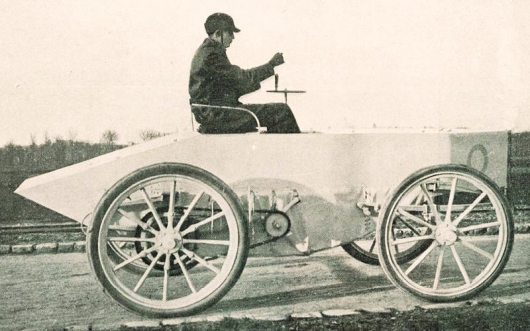
It all began in 1898 when, in fact, an electric car with French roots Jeantaud Duc then set an unprecedented speed record – “flying” in a straight line at the speed of 63,15 km/h Then he deservedly became the fastest car in the world.
At the helm during a record was a fearless rider Gaston de Hasslo LOBA.
Jeantaud, the company continued to produce cars until 1908.
1899 La Jamais Contente – 100 km/h

The Duke briefly retained record. Beat him up on the machine, dubbed La Jamais Contente, which in French can be translated as “always dissatisfied”. The car was also buggy, and she first of all stepped across the threshold of 100 km/h.
Behind the controls was the Belgian Camille, Genezi.
1904: DMG Mercedes Simplex – 156 km/h
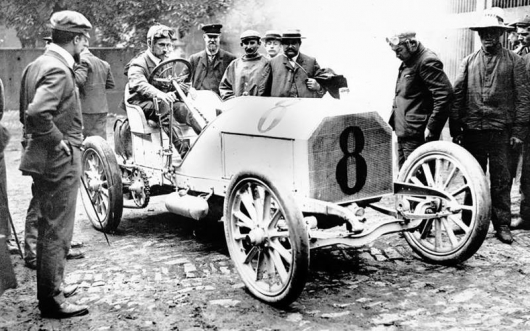
Another Belgian Pierre de Custers took to record-in a Mercedes and dispersed its almost up to 160 km/h during a race near the Belgian city of Ostend. The yard was in may 1904. The car was developed 90 HP by a huge 11.9 liter four-cylinder internal combustion engine.
1904: Gobron-Brillié – 167 km/h
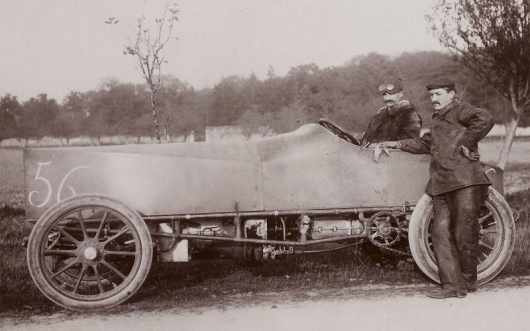
Monsieur de Caters long rested on its laurels. In July of the same year, the French Louise Rigoli broke the record. Also in Ostend, only the speed was higher – 167 km/h, or to be more precise 166.66 km/h. In the success he has helped 15 litre unique engine with counter movement of the pistons.
The cars were still in the primitive stages of development, but high-speed era really come.
1913: the Fiat S76 – 213 km/h
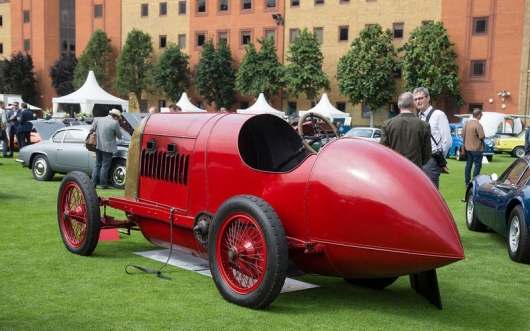
This car, known worldwide as the “beast of Turin”, by and large should not be on the list. Yes, the car was built by the founder of Fiat, Giovanni Agnelli, specifically to break the speed record on earth. Red monster equipped with 28-liter 4-cylinder engine producing about 300 HP
American racer Arthur durai, you arrive in Ostend in December, 1913, was able to reach a maximum speed of 213 km / h, but-in the opposite direction during the allotted hours and was not carried out.
1914: Blitzen-Benz – 200 km/h
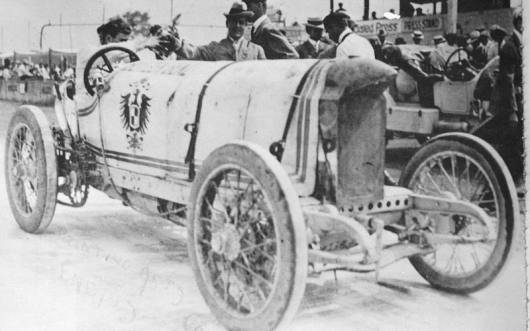
But Blitzen Benz a year later, skated the race as expected. It was in the UK, where in June 1914. Behind the wheel of a monster built Benz with 21.5-litre engine had a son after the great Britain in Russia, Lydston of Horsted. The engine produced about 200 HP Check was conducted on the circuit of Brooklands driving, near London.
Which began soon after the First world war marked the end of the peace races for several years.
1922: Sunbeam 350 HP – 218 km/h

After the war, the engineers and racers realized that the key to higher speed is the use of aircraft, which begin to appear the engines huge power (for the time). The arguments on the subject have led to the emergence of Sunbeam car with 350 HP in 1920. Under the long bonnet stood at 18.3-litre V12.
The heir to the Irish brewery, Guinness Kenelm Lee brought the car to the record of 218 km per hour in may, 1922 at Brooklands. It was the last time the land speed record was set on the road and not on the beach or salt marsh.
1925: Sunbeam Blue Bird – 243 km/h

Malcolm Campbell bought the 350-horsepower Sunbeam in three years and giving him a proper name – “Blue Bird”, set a new speed record.
Powerful cars began to demand more long straight to test the full potential. Beach Pendine in Wales has become a popular choice for many potential British record attempts, due to the long smooth sandy beach.
In September 1924 Sunbeam “Blue Bird” car topped out at 234 km/h, but in July of the following year the record was improved – 243 km/h.
1927: Sunbeam 1000 HP – 328 km/h
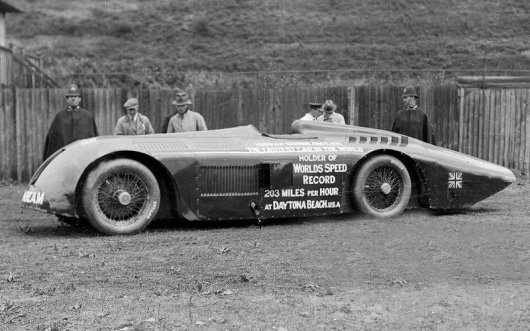
To overcome 300 km/h, that’s what goal set before him, the intrepid riders. But to do that, needed was motors giant power. Surprisingly, already in the late 20-ies of any. 1.000 horses! This is not the feeble little motor car, Adam Kozlevich from the unforgettable novel by Ilf and Petrov “Golden calf”, rather it is closer to a modern Bugatti Veyron. One horse was not enough the car 1927.
The first who managed to achieve incredible in those days speed was the car Sunbeam – “sunbeam” and this name was revealed this essence. Car use was associated with problem – direct beaches of Britain was not enough. Therefore, for the speed record, the car was sent across the Atlantic to Daytona, Florida where the beaches could provide enough space for maximum speed.
Record in 327.97 km/h has been installed! Behind the wheel was a Brit Henry Segrave.
It is not surprising that the tragedy was with a high-speed races side by side. Just one year later, the Indy 500 winner Frank Lockhart during the record attempt, 1928 died on the track at Daytona when the wheel exploded at high speed knocked the car, the driver flew out of his car before the speed record was read.
1935: Campbell-Railton Blue Bird – 484 km/h
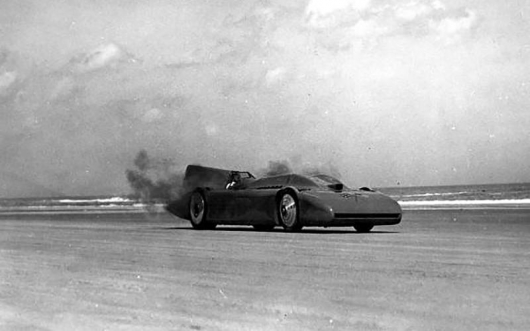
Despite the danger, the improvement in performance of the car went faster in the 1930-ies. This time speed limits has increased to the fantastic. It turned out that you can fly along the beaches with the speed of the aircraft.
Sir Malcolm Campbell proved it at the wheel of the car, “Campbell-Railton Rolls-Royce BlueBird” speeding up to 301.13 mph (484.62 km/h) on the beach in Daytona beach.
This car used to really diesel to 36.7-liter Rolls-Royce R V12 supercharged, able to issue on-mountain 2.269 horses. Where there is the Veyron, and Charanam!
Conventional internal combustion engines have achieved fantastic for that time speed, but soon they were to be replaced by new technologies. However, war again intruded in the hunt for a land speed record.
1964: the Bluebird-Proteus CN7 – 648 km/h
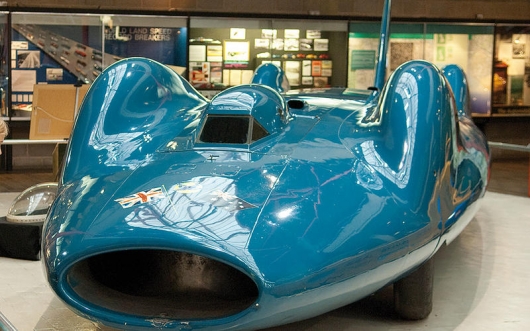
July 1964 saw the more crazy speed runs in a straight line. Almost 650 km/h, this is not a joke!
The record was officially noted in history with Golden letters the son of sir Malcolm Campbell, Donald reaching a speed of 403.14 mph (648,79 km/h) on gas turbine engine Bluebird-Proteus CN7. Check-in took place on the large lake Eyre in South Australia, which most of the time is a dry salt plain.
Attempt opened the door for jet engines.
1970: The Blue Flame – 1001 km/h
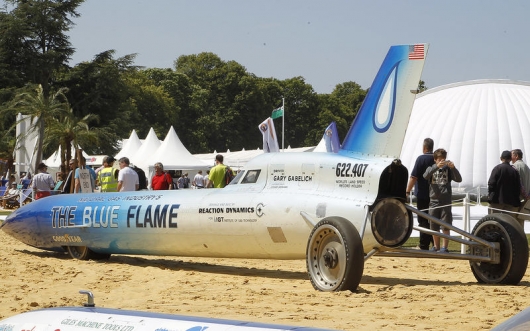
1000 km/h is passed!
American racers, of course, were annoyed by the prolonged British domination in high-speed races. Speed records fell like a horn of plenty, but the Yankees they did not have a place. To change the alignment of forces, Reaction Dynamics from Milwaukee began developing their missile car in 1965. The car used a combination of fuels based on hydrogen peroxide and high-purity liquefied natural gas, compressed helium gas.
Race in the Bonneville salt flats in Utah, Gary Gabelich driving, showed that the developers of “Blue flame” went absolutely right. 1001 km/h in October 1970, became proof of that.
1983: Thrust 2 – 1019 km/h

The record lasted 13 years. Then came the “British Thrust 2” – this car was equipped with one jet engine Rolls-Royce Avon jet fighter the English Electric Lightning.
To record it was led by Richard noble in the desert of black rock, Nevada, in October 1983 together they have achieved 633.468 mph (1019,47 km/h).
1997: Thrust SSC – 1227,93 km/h

Richard noble decided to beat your own record, leading the project, which was finally challenged by anyone not previously decided and the passage through the sound barrier.
This time the car was equipped with not one, but two jet engines, turbines Rolls-Royce Spey, borrowed from the British version of the fighter McDonnell Douglas F-4 Phantom II.
That was enough to charge the car with power on the order of 110,000 horsepower. Run a jet plane on wheels took place in October 1997 in the black rock desert, Nevada. Not surprisingly, behind the wheel, put the RAF pilot Andy green.
1997: Thrust SSC – 1227,93 km/h
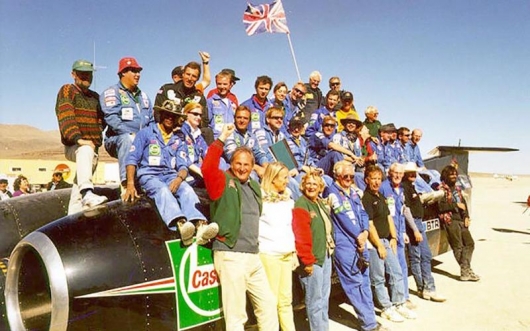
“This is the loudest, highest sound I’ve ever heard,” said Greene about approaching the sound barrier, “the car pulled to the side (video how was the check-in) – due to the design of the wheels that were set back in a staggered manner. He had a tendency to shift to the left at a speed of over 965 km/h to keep him on the straight path, had to turn the wheel as much as 90 degrees.” 90 degrees, use a speed of 1000 km/h! Just incredible.
2020: Bloodhound SSC – 1600 km/h?
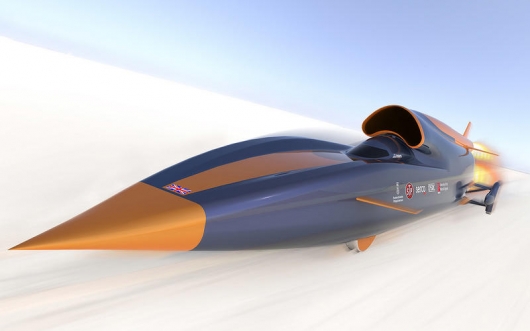
After the triumph of 1997, noble Brit returns. Great goal – to move the mark of 1,600 km/h Bloodhound SSC is working on the turbine of a Rolls-Royce Eurojet EJ200, this time borrowed from the Eurofighter Typhoon aircraft.
After the test at 300 km/h in the town of Newquay in the West of England in 2017, the current goal is to break 800 km/h in 2019, and then set the record in the 1.600 km/h in 2020. Check-in will be held on the track in the desert of the Northern Cape province of South Africa. However, the Bloodhound has rivals who want to do the same – who will win? Getting hot…
